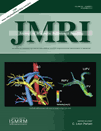Accuracy and precision of vessel area assessment: Manual versus automatic lumen delineation based on full-width at half-maximum
Abstract
Purpose:
To evaluate the accuracy and precision of manual and automatic blood vessel diameter measurements, a quantitative comparison was conducted, using both phantom and clinical 3D magnetic resonance angiography (MRA) data. Since diameters are often manually measured, which likely is influenced by operator dependency, automatic lumen delineation, based on the full-width at half-maximum (FWHM), could improve these measurements.
Materials and Methods:
Manual and automatic diameter assessments were compared, using MRA data from a vascular phantom (geometry obtained with μCT) and clinical MRA data. The diameters were manually assessed by 15 MRA experts, using both caliper and contour tools. To translate the experimental results to clinical practice, the precision obtained using phantom data was compared to the precision obtained with clinical data.
Results:
A diameter error <10% was obtained with resolutions above 2, 3, and 5 pixels/diameter for the automatic FWHM, contour, and caliper methods, respectively. Using phantom data, precision of the manual methods was low (error >20%), even at high resolutions, while precision for the automatic method was high (error <3%) when using more than 2 pixels/diameter. A similar trend was found with clinical data.
Conclusion:
The results obtained clearly demonstrate improvement in the accuracy and precision of vessel diameter measurements with use of the automatic FWHM-based method. J. Magn. Reson. Imaging 2012;36:1186–1193. © 2012 Wiley Periodicals, Inc.




